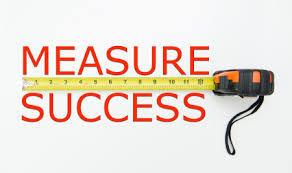Metrics are an important part of making any company successful. They let you measure the Return on Investment (ROI) for a given marketing channel, and tell you if it is time to spend more to continue to increase market share; They can identify what percentage of contribution is made by sales and marketing to capturing new accounts and bottom-line revenue. They tell you what it costs your company to get, keep, and lose an account.
So, below are the key performance indicators (KPIs) your CEO should be tracking:
1) Customer Acquisition Cost (CAC)
This is the Total Sales and Marketing cost -- add up all the program spend, plus salaries, commissions, bonuses, and overhead -- in the same time period, divided by the number of new customers in that time period. That time period, by the way, could be a month, a quarter, or a year. For instance, if you spent $300,000 on Sales and Marketing in a month and added 30 customers that month, then your CAC is $10,000.
2) Marketing % of Customer Acquisition Cost (M%-CAC)
The marketing portion of CAC and call it M-CAC, and then compute that as a % of overall CAC. The M%-CAC should be followed over time to weigh strategy against effectiveness.
For instance, an increase could mean you are trying to raise sales productivity by spending more on marketing and providing more and higher quality leads to Sales.
For a company that does mostly outside sales with a long and complicated sales cycle, M%-CAC might be only 10-20% . For companies that have an inside sales team and a less complicated sales process, M%-CAC might be more like 20-50% . And for companies that have a low cost and simpler sales cycle where sales are somewhat humanless, the M%-CAC might be more like 60-90%.
3) Ratio of Customer Lifetime Value to CAC (LTV:CAC)
For companies that have a recurring revenue stream from their customers -- or repeat purchase -- you need to estimate the current value of a customer and compare that to what you spent to acquire a new customer.
To compute the LTV, you take revenue the customer pays you in a period, subtract out the gross margin, and then divide by the estimated churn % (cancellation rate) for that customer.
So, for a type of customer who pays you $100,000 per year where your gross margin on the revenue is 70%, and that customer type is predicted to cancel at 16% per year, then the LTV is $437,500.
Now, once you have the LTV and the CAC, you compute the ratio of the two. If it cost you $100,000 to acquire this customer with an LTV of $437,500, then your LTV:CAC is 4.4 to 1.
For growing SaaS companies, most investors and board members want this ratio to be greater than 3X; a higher ratio means your Sales and Marketing have a higher ROI. Higher is not always better.
When the ratio is too high, you might want to spend more on Sales and Marketing to grow faster, because you are restraining your growth by under-spending, and making life easy for your competition.
4) Time to Payback CAC
This is the number of months it takes you to earn back the CAC you spent to get a new customer. You take the CAC and divide by margin-adjusted revenue per month for the average new customer you just signed up, and the resulting number is the number of months to payback.
In industries where customers pay one time upfront, this metric is less relevant because the upfront payment should be greater than the CAC, otherwise you are losing money on every customer. In industries where customers pay a monthly or annual fee, you usually want the Payback Time to be under 12 months, so you become “profitable” on a new customer in under a year, and there after you are making money.
5) Marketing Originated Customer %
This ratio shows what % of your new business is driven by Marketing. To compute it, take all of the new customers you signed up in a period, and look at what % of them started with a lead that Marketing generated. This is much, much easier to do when you have a closed-loop marketing analytics system, but you can do it manually -- just know it will be time consuming.
What I like about this metric is that it directly shows what portion of the overall customer acquisition originated in Marketing, and it is often higher than Sales would lead you to believe.
In my experience, this % varies widely from company to company. For companies with an outside sales team supported by an inside sales team with cold callers, this percentage might be pretty small, perhaps 20-40% ; for a company with an inside sales team that is supported by a lot of lead generation from Marketing, it might be 40-80% ; and for a company with somewhat humanless sales, it might be 70-95% .
Note: You can also compute this percentage using revenue, not customers, depending on how you prefer to look at your business.
6) Marketing Influenced Customer %
This is really similar to the Marketing Originated Customer %, but it adds in all the new customers where Marketing touched and nurtured the lead at any point during the sales process, not only by originating the lead. For instance, if a salesperson found a lead but then the lead attended a marketing event and then later closed, that new customer was influenced by Marketing. This % is obviously higher than the "Originated" percentage, and for most companies I think this should be between 50% and 99%.

There you have it, the key performance indicators and marketing metrics that your CEO should be tracking.
Sources: Hubspot
For a full report of results of Inbound Marketing Methods proven at 4,000 Customers, download our slide deck below:
Bay Area Inbound is a Marketing Consulting Firm in the SF Bay Area. For a free website and online marketing evaluation, contact Laurie@BayAreaInbound.com or call 510-543-7593.
Follow us for the latest on how to drive traffic to your website, capture warm leads, and nurture them towards sales at www.bayareainbound.com/blog

